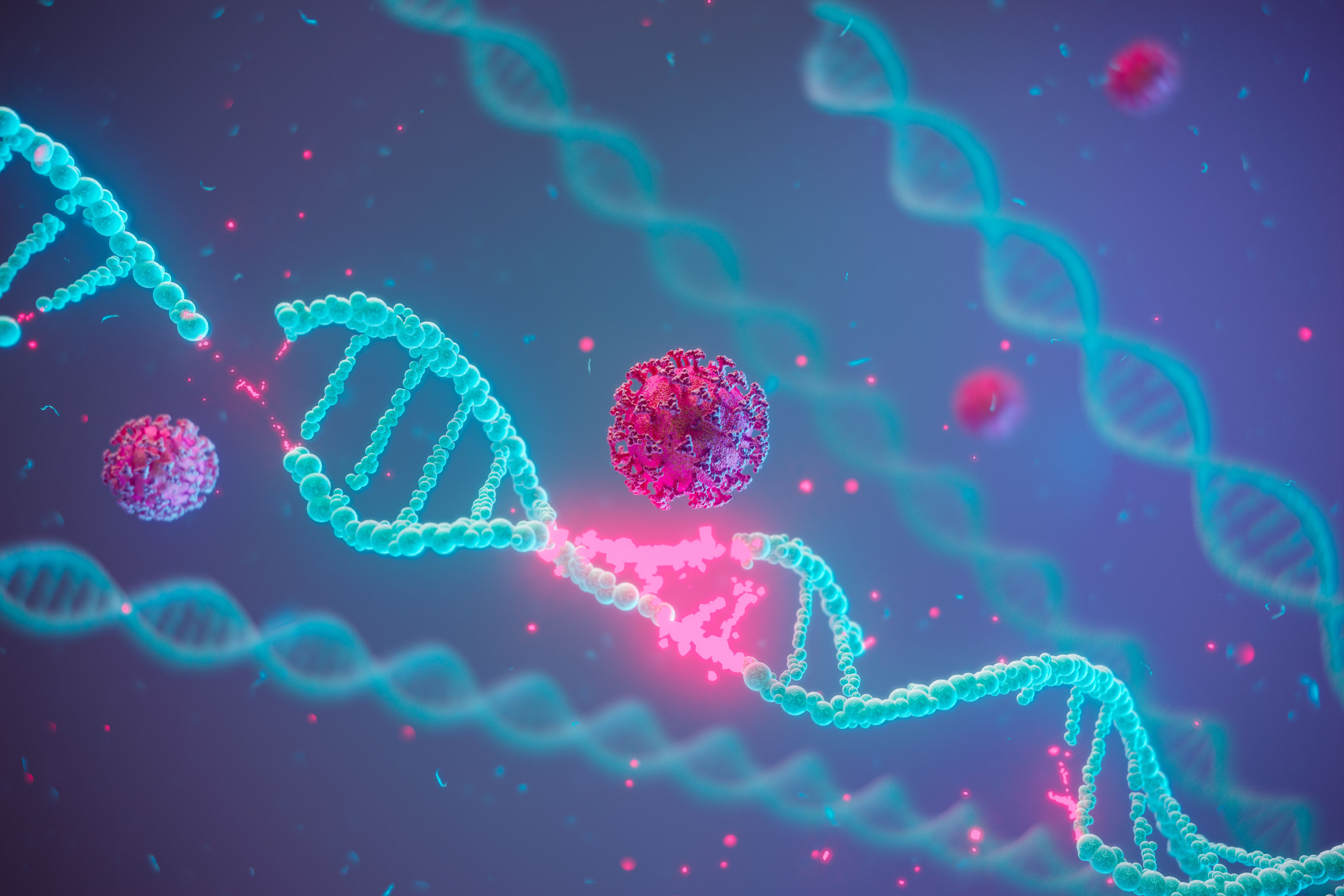News
Article
Emerging Technology Engineers Oncogenic Mutation Into Cell Lines
Author(s):
A new proof-of-concept method reliably engineered a hotspot mutation of SF3B1, a gene-splicing gene, into diverse cancer cell lines, outperforming other contemporary editing approaches.
SF3B1 remains one of the more frequent and recurrent mutated RNA-splicing genes in cancer. Yet, a lack of disease-relevant cell line models have hindered clinical understandings of its pathologic role. A novel approach to gene editing provides insights into the role of SF3B1 in cancer, according to research published in Cancer Research Communications.1
Oncogenesis associated with hotspot mutations in SF3B1 has been observed throughout a multitude of cancers. New advances in gene editing promises to revolutionize cancer research with precise and accurate modeling of specific point mutations, the authors wrote. This is especially relevant for SF3B1, which "is recurrently mutated in many types of cancer with a particularly high frequency for hematological malignancies at the K700E position,” they added.
Gene editing | image credit: 4K_Heaven - stock.adobe.com

The new study aimed to identify a method that would efficiently introduce the SF3B1 mutation into diverse cell lines in a cost-effective manner.
According to the authors, murine models with lineage-restricted expression of SF3B1 have enabled mechanistic and functional dissection of the role of SF3B1 in vivo. However, these models have been restricted by high operating costs that limits the availability of different cancer models and difficulty in further genetic manipulation. Conversely, in vitro cell line systems have been shown to be an attractive orthogonal model owing to the ease of engineering and broad representation from across the cancer spectrum.
The researchers first compared 4 gene-editing platforms to establish SF3B1 mutant cell lines: CRISPR-Cas9 editing, AAV HDR editing, base editing and prime editing. Prime editing was shown to be more accurate than base editing while remaining less toxic and more efficient than Cas9 and AAV-based approaches.
Study results demonstrated that the PE5max prime editing system achieved the most efficient SF3B1 K700E editing across a wide range of diverse cellular context. Prime editing is a CRISPR-based technology.
The authors next advanced the capabilities of prime editing by devising an innovative approach, termed prime editing coupled intron-assisted selection (PRECIS), that paired fluorescent sorting with prime editing. They documented that coupling prime editing with a SF3B1 mutation-responsive “reporter” (intron 1 of the MTERF2 gene) facilitated cell line engineering to create SF3B1 mutant chronic lymphocytic leukemia (CLL) cell lines.
Additional analyses revealed a loss of Y chromosome (LOY) in CLL cell lines. LOY, defined as partial or full deletion of the Y chromosome, was once thought to be a benign age-related event but is now known to be widespread in multiple cancers, including leukemias. Previous research has demonstrated a strong co-occurrence of SF3B1 mutation and LOY. In CLL, LOY is a major risk factor, the authors said.2
In this study, differential gene expression analysis also revealed a significant global down regulation of Y chromosome genes.1 Additional analyses suggested that LOY is a conserved mutant SF3B1 phenotype in CLL.
The researchers also noted that, in rare cases, CLL may progress to a type of B-cell lymphoma, called Richter Syndrome, that is characterized by notably higher levels of copy number variations (CNVs) compared with antecedent CLL. Interestingly, these CNV events often exist downstream of Richter-transformed SF3B1 mutant CLL, suggesting that SF3B1 mutation drives clonal evolution via CNV changes.3
Additional analyses confirmed that general and lineage-specific CNV events are hallmarks of SF3B1 mutation-driven clonal evolution.1 Thus, the researchers hypothesized that their cell lines could be used to model, to a certain degree, CNV clonal evolution of SF3B1-mutated CLL.
Overall, findings demonstrated that PRECIS effectively engineers the oncogenic SF3B1 K700E hotspot mutation into cell lines, outperforming contemporary Cas9, AAV, and base editing approaches. They also highlighted that CLL SF3BI-mutant cell lines accurately modeled for phenotypes of SF3B1-mutated CLL, including altered splicing, CNVs, and cell growth defect.
However, the study leaves unanswered questions for future research, the authors acknowledged. As the MTERF2 synthetic intron is not limited to the K700E mutation, for instance, engineering possibilities may be expanded to include other hotspot mutations, they suggested.
“Our approach provides new insights on the role of SF3B1 of mutation in cancer and enables the generation of SF3B1 mutant cell lines in relevant cellular context,” the authors concluded. “It not only provides a generalizable approach for isogenic cell line engineering but also reveals novel aspects of cancer biology.”
References
1. Fernandez M, Yu L, Jia Q, et al. Engineering oncogenic hotspot mutations on SF3B1 via CRISPR-directed PRECIS mutagenesis. Cancer Res Commun. 2024. doi:10.1158/2767-9764.CRC-24-0145
2. Ouseph MM, Hasserjian RP, Dal Cin P, et al. Genomic alterations in patients with somatic loss of the Y chromosome as the sole cytogenetic finding in bone marrow cells. Haematol. 2021;106(2):555-64 doi:10.3324/haematol.2019.240689
3. Parry EM, Leshchiner I, Guieze R, et al. Evolutionary history of transformation from chronic lymphocytic leukemia to Richter syndrome. Nat Med. 2023;29(1):158-69 doi:10.1038/s41591-022-02113-6





